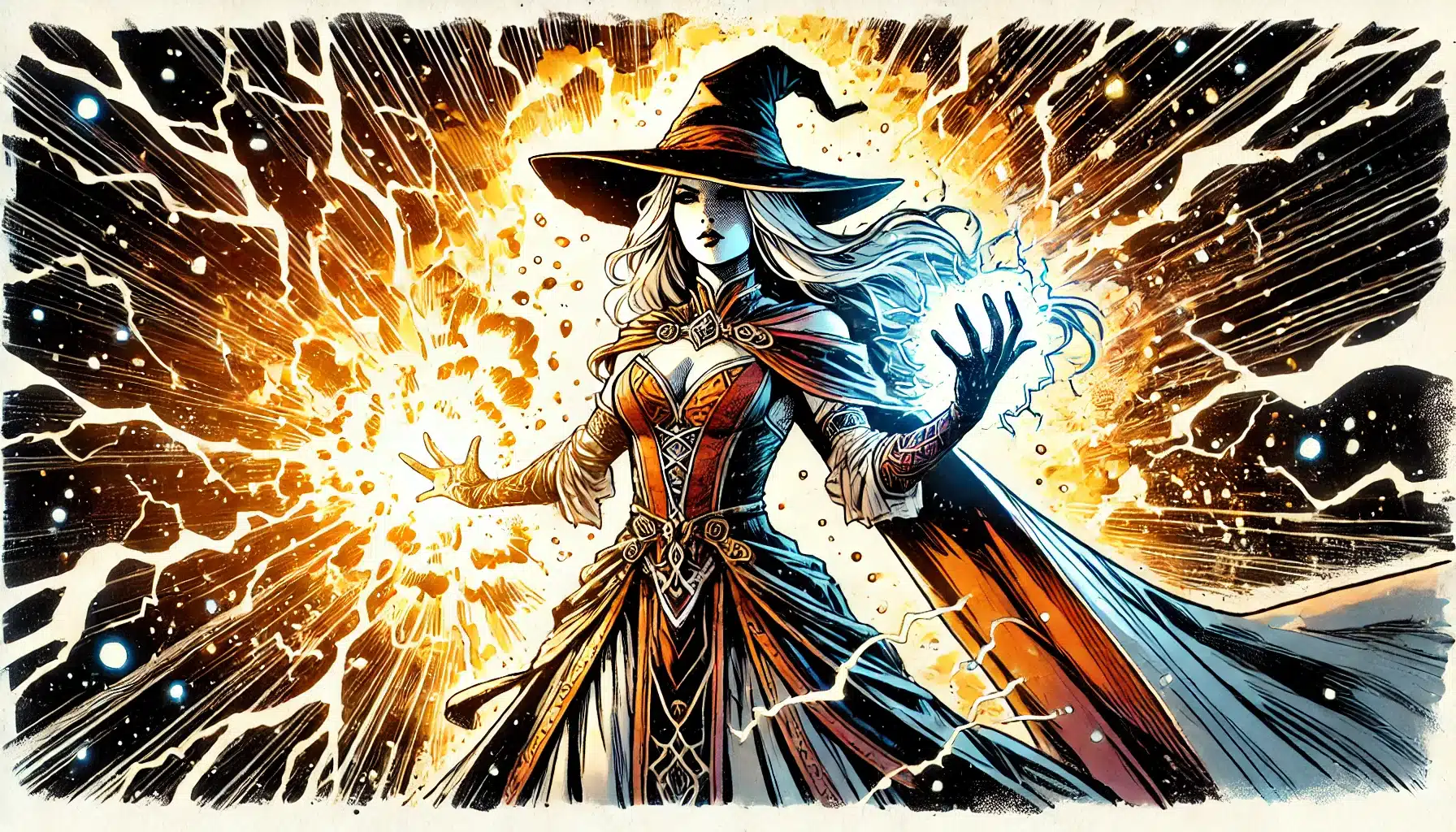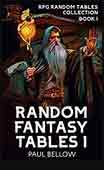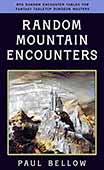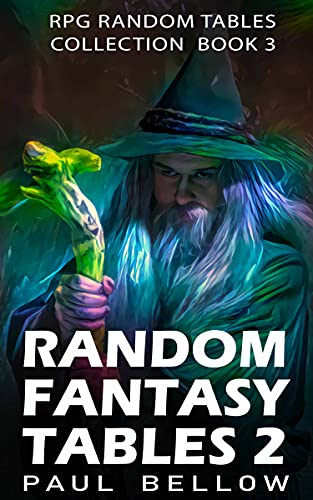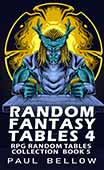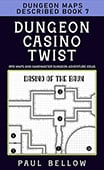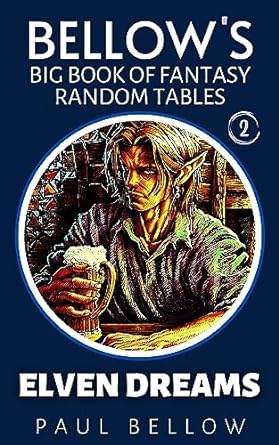Few subclasses in the wizard’s sprawling legacy evoke—pun intended—the instinctive thrill of harnessing pure, eruptive magic as vividly as the Evoker, newly rechristened for clarity in the 2024 Player’s Handbook. The Evocation tradition is as old as Dungeons & Dragons itself, tracing its ancestry from the earliest spell-slingers first depicted in the monochrome splendor of Advanced D&D. Wizards in tattered cloaks cradled spellbooks bursting with arcane power, and few schools inspired players (and terrified DMs) like Evocation—with its promise of fireballs, thundering lightning, and unstoppable bolts of magical chaos.
While every edition has toyed with the magical identity of the Evocation school, it wasn’t until the 2014 core rules that the subclass gained a distinct, mechanical personality. Back then, the Evocation Wizard was the party’s artillery—unconcerned with subtlety, defined by their ability to sculpt battlefield chaos with devastating elemental magic, and equipped with clever mechanics to avoid incinerating their friends. Players relished being able to shape combat with area-of-effect spells, consistently dishing out spectacular damage.
With the release of the 2024 Player’s Handbook, Wizards of the Coast cast a gentle rebrand: “Evoker” replaces “Evocation Wizard,” signifying a streamlining of class identity and opening the door to sharper subclass flavor. The modern Evoker retains its core as the elemental powerhouse, but tweaks and rebalances its toolkit with the intent to improve play at all levels—especially the critical early campaign stretch where wizards can feel overly fragile or overshadowed.
Beyond the surface, these updates are more than cosmetic. Features such as Potent Cantrip and Evocation Savant see meaningful revisions that address access, consistency, and utility—making Evokers less about praying for perfect dice rolls and more about steady, satisfying arcane bombardment. Meanwhile, longtime favorites like Sculpt Spells and Empowered Evocation march on, reassuring veterans that the subclass’s spirit remains untarnished.
This deep dive is both a nostalgic tip of the mage’s hat to classic pyromancers and a mechanical reappraisal for modern adventurers. Whether you played the original Evocation specialist in a candlelit basement, or you’re cracking open your first 2024 character sheet, the Evoker stands ready to channel the elements and redefine magical might for a new generation.
What’s Changed in the 2024 Evoker Wizard?
To understand the new Evoker, you must first appreciate the shifting rules landscape of D&D. With the 2024 Player’s Handbook, all subclasses—including the Evoker—now unlock at Level 3. This universal change levels the playing field, offering wizards a crucial taste of subclass flavor just as the game’s pace picks up. For Evokers, this means instant access to features like Evocation Savant and Potent Cantrip, ensuring your arcane identity is clear from your first real dungeon crawl.
Try my AI Tabletop RPG generators...and an extensive library of content!
Evocation Savant, once a somewhat niche boon for magic hoarders, is now smarter and more generous. The 2024 rewrite extends its reach, encouraging Evokers to actively expand—and experiment with—their spellbook. Potent Cantrip, another early star, has also been trimmed and clarified. Instead of vague bonus damage or conditions, it now reliably ensures your cantrips pack a punch, even against stubbornly evasive foes or those with partial resistances.
Not everything is new. Empowered Evocation and Overchannel retain their 2014 power and flavor—unchanged, but better paced alongside other wizard features. What’s distinct is the subclass feature pacing: sculpting and boosting spells comes later, no longer front-loading power into the earliest levels. This rebalance ultimately makes Evokers easier to play and far more consistent, especially for newcomers.
All told, these changes serve to unify the Evoker experience: no more complicated corner cases, no more waiting until Level 6 to feel relevant. The archetype remains true to its destructive spirit, binding together decades of fiery wizard tradition with a streamlined, elegantly modern ruleset.
| Feature Name | Level Gained | Changed from 2014? | Summary of Change |
|---|---|---|---|
| Name Change | N/A | Yes, now “Evoker” | Rebranding for clarity and subclass identity. |
| Subclass Access | 3 | Yes, was level 2 in 2014 | All subclasses now start at Level 3 in 2024. |
| Evocation Savant | 3 | Yes, improved | More spellbook additions, greater incentive to grow your spell repertoire. |
| Potent Cantrip | 3 | Yes, streamlined | Consistent cantrip damage even on missed or resisted targets. |
| Sculpt Spells | 6 | Yes, delayed from level 2 | Classic mechanic unlocked later, balancing early-level power. |
| Empowered Evocation | 10 | No | Unchanged: boost Evocation spell damage with your INT modifier. |
| Overchannel | 14 | No | Unchanged: maximize damage at cost—classic high-level nuke option. |
| Overall Subclass Role | All Levels | Slightly, more consistent | Maintains elemental artillery identity, but more accessible and reliable. |
The new Evoker is both a tribute to its iconic history and a leap forward in design sensibility. Wizards hungry for raw sorcerous muscle will find the subclass’s streamlined features a breath of fresh (if faintly smoky) air.
⚔️ Fantasy RPG Random Tables Books
Make life as a Gamemaster easier…
If you play Dungeons & Dragons, Pathfinder, or other fantasy RPGs, this
RPG random tables series
is packed with encounters, NPCs, treasure, and more. Available in eBook or print—either way, you’ll have a wealth of adventure ideas at your fingertips.
Perhaps most importantly, the 2024 Evoker stands out as a model for subclass clarity—welcoming for new players yet rewarding for seasoned strategists. It’s a dazzling callback to classic D&D fireworks, but with sharper focus, fewer rules headaches, and a deeper bench of meaningful choices at every level.
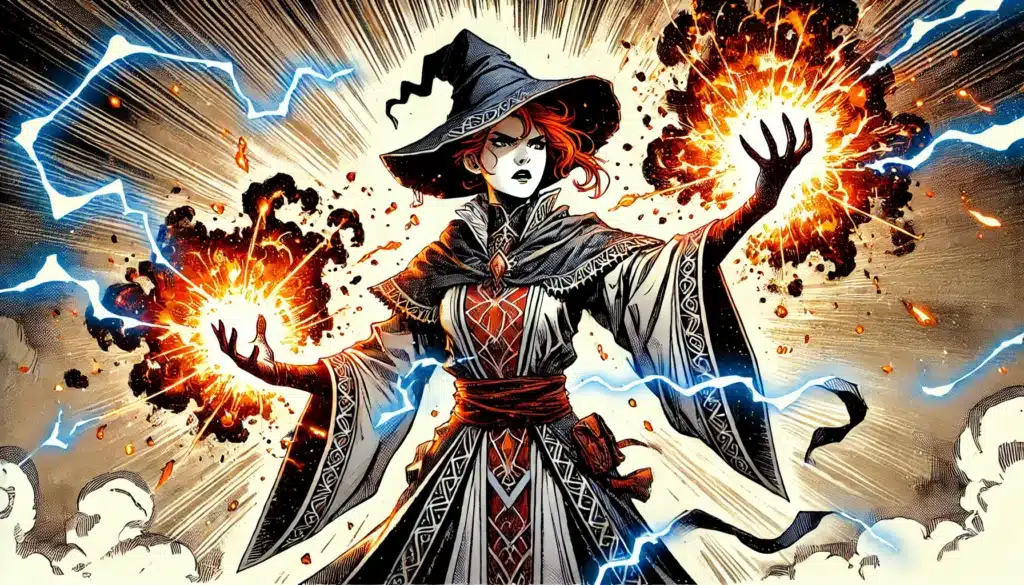
Core Features of the Evoker Wizard
Evocation Savant is your golden ticket to spellbook mastery. No longer just a coin-saving coupon, the 2024 version directly incentivizes Evokers to expand their arcane arsenal: you can add more evocation spells than ever before, obscenely stuffing your spellbook with elemental options for every situation. This not only makes you the group’s go-to master of magical artillery, but also keeps your game fresh as you discover new “toys” for every obstacle and enemy.
The revised Potent Cantrip feature is a subtle but seismic improvement. Gone are the days of fizzling magic; now, even your missed or partially resisted evocation cantrips (think Fire Bolt or Ray of Frost) deal predictable damage. This means consistent offense during those resource-scarce moments when you don’t want—or can’t afford—to burn higher-level spell slots. Evoker cantrips are no longer filler; they’re reliable weapons, always at your fingertips.
Sculpt Spells, long the signature safety net for Evokers, now lands at level 6—later than before, but with good reason. This iconic feature gives you the power to shield allies from the friendly fire of your sweeping area spells, letting you drop that Fireball in the middle of a melee scrum without sacrificing party harmony. Its later arrival helps balance early game power, ensuring wizards don’t trivialize positioning and teamwork at low levels, yet still allowing for reckless magical bravado as the campaign heats up.
Empowered Evocation and Overchannel—your core high-level artillery enhancements—remain untouched. Empowered Evocation lets you stack your formidable Intelligence modifier directly onto the damage of any evocation spell, turning classic “blaster” spells into true show-stoppers. Overchannel, meanwhile, offers the high-stakes thrill of maximizing spell damage, with the risk of self-harm—a mechanical dare for the bold-hearted archmage. Together, they ensure that the Evoker’s endgame is as flashy and destructive as ever.
Evoker Spell Synergy and Strategy
Spell selection is both art and science for the modern Evoker. The subclass shines brightest when you focus on area-of-effect (AoE) spells: Fireball, Lightning Bolt, and Cone of Cold become tactical masterpieces when paired with Sculpt Spells, allowing you to dominate the battlefield’s geometry and dictate enemy movement. With Sculpt Spells, allies can rush headlong into danger knowing they’ll be untouched by your magic’s fury.
Single-target spells aren’t ignored either. Empowered Evocation makes every blast of Scorching Ray, Inflict Wounds, or even Magic Missile hit that much harder, ensuring you can decimate priority targets amid the chaos. Meanwhile, Potent Cantrip means that even when conserving spell slots, you’re still contributing meaningful damage every turn—something no wizard (or party) should take for granted.
Strategically, the Evoker rewards careful preparation and positioning. Knowing when to unleash an Overchannelled Fireball can turn the tide of an epic boss battle, but prudent use is essential; you don’t want to find yourself on the verge of collapse after a single, glorious explosion. Partner with your party: communicate when you’re about to carpet the field in searing flame, and coordinate initiative to keep allies out of harm’s way.
Above all, the Evoker’s power lies in its reliability and spectacle. You offer not only dramatic, cinematic moments but also the tactical backbone for controlling the flow and tempo of tough fights. The right spell at the right time can crush opposition—or save the day.
Evocation Spells for Evokers:
- Burning Hands
- Fireball
- Lightning Bolt
- Scorching Ray
- Magic Missile
- Chain Lightning
- Cone of Cold
- Wall of Fire
- Ice Storm
- Thunderwave
- Melf’s Minute Meteors
- Sunbeam
- Immolation
- Prismatic Spray
There are dozens more, but these classics—both high-octane and clever crowd-control—illuminate exactly why spell choice is the keen-edged blade of the Evoker.
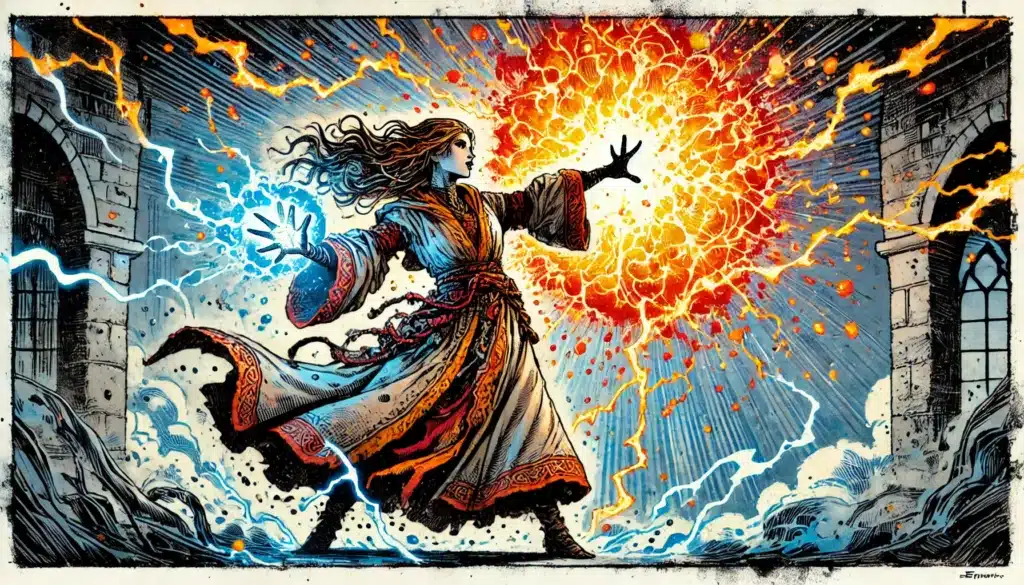
Power Curve and Role in a Party
Within a balanced party, the Evoker is the blunt instrument of arcane devastation. Their specialty—dealing swaths of destructive energy across the battlefield—means they’re invaluable when facing crowds of lesser foes or entrenched enemy lines. No other subclass can so effortlessly reshape an encounter, clearing mobs and softening up bosses before melee allies move in to finish the job.
The flip side: positioning is everything. The very spells that make the Evoker a legend—massive AoEs and unpredictable ricochets of energy—also risk striking friends as well as foes unless planned meticulously. Sculpt Spells thankfully mitigates this, but your party will bless your name (or glare at you) depending on your ability to coordinate fire with their frontline movements.
⚔️ Fantasy RPG Random Tables Books
Make life as a Gamemaster easier…
If you play Dungeons & Dragons, Pathfinder, or other fantasy RPGs, this
RPG random tables series
is packed with encounters, NPCs, treasure, and more. Available in eBook or print—either way, you’ll have a wealth of adventure ideas at your fingertips.
While unmatched in crowd control and burst damage, Evokers can find themselves feeling underwhelming against solo enemies with high magic resistance or immunity, and rely on party support (or judicious use of Potent Cantrip and single-target spells) to stay relevant in “boss fight” scenarios. The Evoker is best when unleashed on a battlefield seething with threats, not during duels or prolonged magical skirmishes.
Tips for Playing an Evoker in a Party:
- Lead with area spells to soften or scatter enemy ranks.
- Coordinate initiative with frontline allies to maximize Sculpt Spells’ benefit.
- Use Potent Cantrip when conserving spell slots or fighting magic-resistant foes.
- Plan Overchannel bursts for boss battles or pivotal encounter moments.
- Position yourself to maximize AoE reach while minimizing exposure.
- Don’t hesitate to swap spells in your book to adapt to campaign threats.
- Use spells like Wall of Fire for both area control and battlefield denial.
- Warn allies—clearly—before dropping a big spell in a contested zone.
- Keep an eye on enemy resistances; switch to non-fire evocation when needed.
- Work closely with the party’s tank to create “kill zones” for AoE spells.
- Use crowd-control evocations (like Thunderwave) to shape enemy movement.
- Save spell slots for moments when your damage will make the biggest impact.
- Remember: you’re not just damage—you can be the party’s tactical architect.
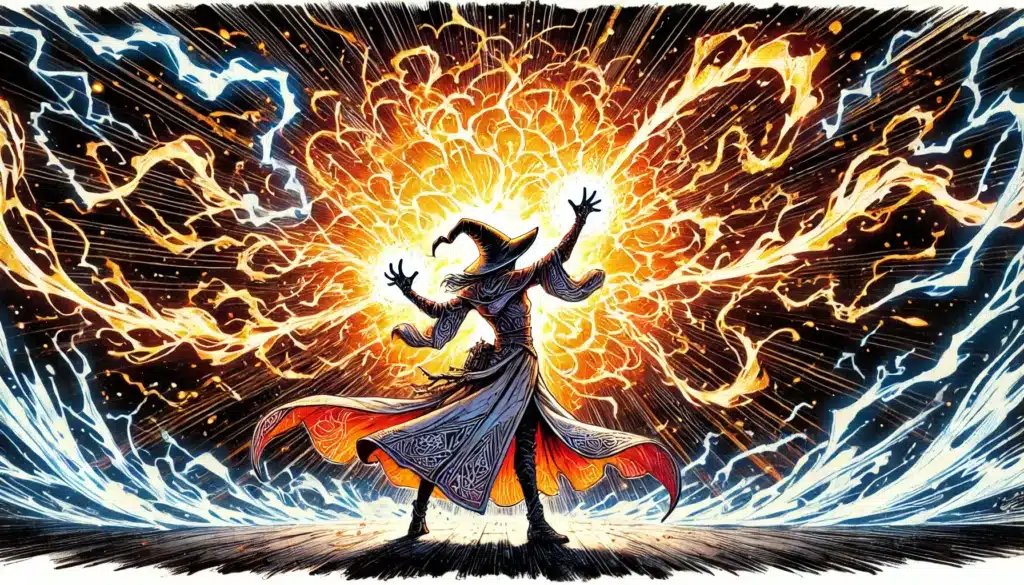
Final Verdict on the 2024 Evoker Wizard
The 2024 Evoker Wizard stands as a testament to what D&D subclasses can be: clear in vision, potent in execution, and immensely rewarding to play. It’s never been easier to channel the wild, intoxicating rush of elemental energy, thanks to sharply tuned features that smooth out old frustrations and highlight every moment spent at the table. Whether you’re a newbie awed by the promise of your first Fireball, or a grizzled veteran hungry for streamlined play, the new Evoker delivers.
Its strengths are unmistakable—straightforward, massive damage; robust early-level tools; and party-friendly design that encourages both planning and improvisation. Sculpt Spells and Potent Cantrip alone would warrant attention, but the entire feature suite hums with synergy: no wasted space, no awkward dead levels, just a steady arc of increasing magical force.
Potential weaknesses remain. No amount of subclass cleverness completely erases the inherent challenges faced by wizards: magical resistance, spell slot management, and the constant threat of getting caught on the wrong side of a goblin’s spear. The Evoker is not a fix-all for those seeking versatility or subtlety; it’s for players who want fire, frost, and thunder with minimal complication. Sometimes, that’s exactly what a campaign needs.
Mechanically, the new subclass rewards consistency. Spellbook expansion means you’re never short on options, while Potent Cantrip ensures your turn always matters—no more ignominious “whiff” rounds. Scaling features provide steady, satisfying growth, and the absence of confusing corner cases or overcomplication makes teaching and learning the Evoker a joy.
Above all else, the 2024 Evoker Wizard feels alive—vivid, authoritative, and ready to turn every combat into an explosive, cinematic event. It preserves the nostalgia of the great magical battles of past editions, while carving out a commanding, accessible role for the wizards of today’s tables. If you dream of bending the battlefield to your blazing will, your elemental masterpiece awaits.

